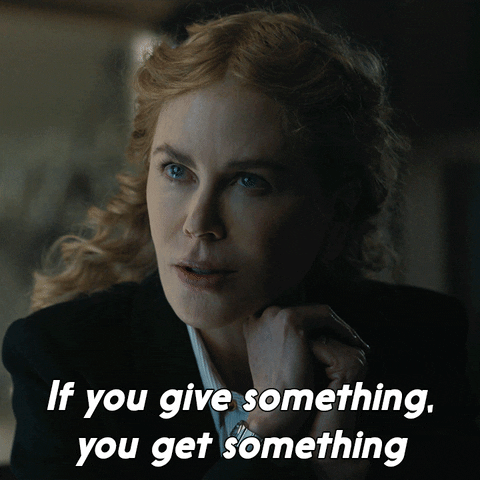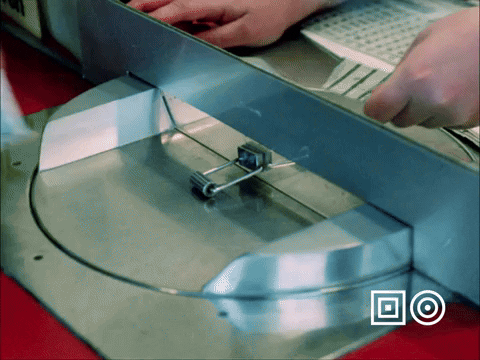
I’m sure a high percentage of people who chose to click this article either are fixers, former fixers, or maybe they want to understand why fixers feel the need to make it their responsibility to change everyone. Well, for one, barely anyone who fits the bill knows why they do what they do until it exhausts them—like myself. I have been a fixer for as long as I can remember. I’ve always loved fighting for the underdog. Something about being needed for the betterment of people’s lives has always felt very fulfilling to me. That is until I’d invested so much in many close relationships that it backfired on me. And like many fixers, I would question how I could have offered so much, yet people treated me anyhow in the end?
First of all, I don’t know who gave me this responsibility. It's really not my battle to fight because transforming people’s mindsets is not any person’s job. It is work that only Jesus can do. “Let go and let God” is a real mindset that fixers need to be open to.
I've realized that if people didn't see the need or have the desire to work through their own mishaps, there was nothing I could do to change the outcome of things. It didn’t matter how much I cared and wanted them to step into their so-called greater potential. Progress wouldn't happen until they were ready and willing to do the work.
My Fixer Revelation
During a therapy session, I was asked whether I liked being “everything” for people close to me, and I said "yes," feeling a bit shameful and questioning why I continued those cycles. Every fixer has their particular reasons, but I think my abandonment issues had a lot to do with it. As a child, I felt that I wanted to be cared for. I wanted to be rescued by my absent biological father and saved from being emotionally neglected by other family members.
I always felt things very deeply. I have a Scorpio Moon sign, and I mention that to signify that I am very comfortable sitting in and working through heavy emotions. It intrigues me a lot, and that’s my big way of fixing people—being their emotional backbone until it’s backfired on me in several close relationships. This is why I’m now choosing to combat this behavior of playing savior and working on being a supporter of people, not their foundations.
Let me introduce you to the fixer lens below, as I dissect this character trait with two therapists who are very well-versed on the subject:
How To Know You're A Fixer
One of the biggest ways to tell if you're a fixer is to see how much you extend yourself in relationships and to whom you stretch yourself. I often extend myself to individuals who associate themselves with avoidant or other anxious attachment styles. I also tend to play the role of fixer to avoidants because they don’t like examining their emotions, and I often like walking them through it. Licensed clinical social worker, Insha Rahman, a relationships and boundaries expert at mental health directory Choosing Therapy, says that fixers tend to feel responsible for other people's emotional stability and happiness, while they themselves are very sensitive and emotionally vulnerable.
If you like to be the giver in a relationship to the point of "saving" or being a "white knight," you're probably a fixer. Someone with a fixer mentality has to fix anything they perceive as hurt, broken, or defective.” I look at myself as an ongoing self-help project. For way too many years, I have applied the same mindset to relationships of any kind—familial, friendly, and romantic.
Licensed mental health counselor Nicole Kleiman-Reck, an expert on relationships and boundaries, mentions another perspective on how to identify whether you're a fixer. “A person can recognize if they are a fixer when they avoid getting to the root of a problem. In relationships, this is often described as being avoidant. If a person is doing all of the work to fix the problems in a relationship, they can pretty much be feeling like they are taking on 100 percent of the responsibility in the relationship. They are not holding their partner accountable for the role he or she is playing and often feel insecure in the relationship. Fixers are often very uncomfortable to see their partner in pain, but it is usually tolerating the discomfort that allows the work to be done for true resolution of problems.”
"Fixers are often very uncomfortable to see their partner in pain, but it is usually tolerating the discomfort that allows the work to be done for true resolution of problems.”
Who would have thought offering your partner space to figure it out for themselves, in their own timing and way, is more beneficial for both parties?
Why You Like Fixing Other People
“Fixers feel the need to fix others because of an underlying need to validate and give meaning to their own lives," adds Rahman. "Many times, fixers are survivors of some kind of past damage such as abandonment or loss of a caregiver. Although their intentions may initially be positive, fixers want to be the one figure everybody looks up to for all the answers.”
Unfortunately, I have felt this as my “calling” to help others in such a capacity, not knowing it was also causing a lot of heartaches as well. I was investing an abundance of self-work that had nothing to do with me and everything to do with the other person. Just because I see and often treat myself as a project doesn't mean others should be depicted through that lens. Just think about how hard it is to unlearn and change aspects of yourself.
To think that’s an easy 1-2-3 for others is literally insanity.
The Backfiring Aspects of Being a Fixer
Many people admire fixers because sacrificing themselves at such a capacity can be disguised as deep-rooted love or care for the other person. In reality, it builds an unhealthy attachment instead of a support system with boundaries — which every relationship needs.
Kleiman-Reck states, “Fixing is unhealthy in relationships because it will get in the way of true intimacy. It's a one-sided relationship, and it can either lead to codependency and enabling of the partner to take responsibility for the changes they need to make on an individual level or will be downright exhausting for the fixer, and they will often get into the habit of fixing, even when there is not a problem. Fixing can get in the way of differentiation in a relationship, which is essential since both partners need to be able to express their individual needs. Being able to openly communicate this is essential in a healthy relationship, and fixing is unhealthy because it prevents this growth.”
"Fixing can get in the way of differentiation in a relationship, which is essential since both partners need to be able to express their individual needs. Being able to openly communicate this is essential in a healthy relationship, and fixing is unhealthy because it prevents this growth.”
As someone who has had my fair share of one-sided relationships, when they came to an end, I felt so empty. It was like, 'Wow, I gave so much.' And in the end, it was never enough. It was just in the last few months of therapy, as I unpacked a lot of my patterns in relationships, that I started to see the role I often played. I questioned whether I was playing this role as a trauma response to underlying abandonment issues.
“Being a fixer can be a trauma response to past abandonment issues that stem from an ingrained sense of being damaged," Rahman says. "And abuse damages self-esteem. Often children who were exposed to parental disapproval, rejection, and physical or emotional abuse will end up with a sense of blaming themselves for their parents' abuse. Then in adulthood, that person might project [their] damaged self onto partners whom they see as in need of repair. In other words, by fixing their partner, they are fixing themselves.” And so, the cycle continues.
Unlearning Habits and Implementing Secure Boundaries
Kleiman-Reck says that in helping fixers through their challenges, she empathizes with "the fixing role they have been playing" and she encourages self-compassion since a "fixing mentality usually comes from a place of deep hurt but also has positive intent." She also reinforces that making it to therapy means that a fixer realizes there is a disconnect in the relationship, which is "huge progress." She helps clients to recognize internal conflicts and works with them to "normalize the two parts of themselves" and have a "healthy dialogue" between the part of themselves that wants to evolve and the part of themselves that wants to fix others.
"I would also support their own discomfort during their process of change and reinforce the beauty that is on the other side of a truly healthy relationship. I would teach them how to get curious about their partner's actions by encouraging them to ask questions (and would guide them through healthier questions to ask)."
"The goal of unlearning their fixing qualities will be to better understand why they feel compelled to fix while normalizing the discomfort that comes from growth. Seeking support would be an ongoing focus while they take action with boundary-setting," she adds.
To all my fixers out there, I know your heart. It is pure and always looking to play the role of a warrior. But a sustaining and healthy love needs space for people to figure out their own mishaps. The best you can do is acknowledge whatever issue comes up with compassion and be patient with others during their healing process.
You need to focus on their discernment and being responsible for your part. You can also release the burden off your shoulders if you admit the work that is meant for you to do in the relationship versus work that the other party needs to tend to.
Every loving relationship needs boundaries. Stop enabling work that wasn’t meant for you to do.
Featured image by Getty Images
- 7 Signs Of Mommy Issues Women - xoNecole: Women's Interest ... ›
- Bad Dating Habits To Let Go Of For Healthy Relationships - xoNecole ›
- Why You Should Never Settle for a 'Shut Up Ring' - xoNecole ›
This Is How To Keep 'Holiday Season Stress' From Infecting Your Relationship
Hmph. Maybe it’s just me, but it seems like there is something really weird happening in the fall season air (because winter doesn’t officially begin until December 21) that cuddle season is in full swing while break-up season is as well. In fact, did you know that break-ups are so popular during the holiday season that December 11 is deemed Break-Up Day?
The reasons why relationships shift around this time vary; however, I did both roll my eyes and chuckle when I read that a very popular one is because it’s an easy way to get out of getting one’s significant other a Christmas present. SMDH.
Anyway, I personally think that the less shallow folks out here may contemplate calling things “quits” or they at least distance themselves a bit from their partner (and what I’m referring to is serious relationships) due to all of the stress and strain that oftentimes comes with the holidays whether it be financial, familial, due to their tight schedules or something else.
Listen, I would hate for you and your man to miss the fun and happiness of experiencing this time of year, all because you are so overwhelmed or irritated that you can’t really enjoy it. That’s why I have a few practical tips for how to avoid allowing the typical holiday season stress from INFECTING your relationship.
Manage Your Expectations
 Giphy
GiphyUnmanaged expectations. If there is a main reason why the holiday season tends to be so stress-filled for so many people, I’d bet good money that this is the cause. And when you’re in a long-term relationship, expectations can manifest themselves in all sorts of cryptic and/or unexpected ways. You might have relatives who assume that you are going to be with them for Thanksgiving or Christmas when you have other plans in mind. You might be thinking that you are going to spend one amount for presents while your man is thinking something totally different. When it comes to scheduling, your signals may be crossed.
And you know what? To all of these scenarios, this is where clear and consistent communication come in. Don’t assume anything. Don’t dictate anything either. From now until New Year’s, mutually decide to check in once a week, just to make sure that you are both on the same page as it relates to the holidays and what you both are thinking will come along with it. The less blindsided you both feel, the less stressed out you will be. Trust me on this.
Set (and Keep) a Budget
 Giphy
GiphyOkay, so I read that last year, 36 percent of Americans incurred some type of holiday-related debt. Hmph. Last year, there was still some sense of normalcy in this country, chile, so I can only imagine what finances are gonna look like over the next several weeks. That said, since I don’t know a lot of people who don’t find being broke stressful, make sure that you and your bae set a budget and then stick to it this year — no ifs, ands or buts.
Because really, y’all — it doesn’t make sense to deplete savings and/or max out credit cards for a few days of giggles only to be damn near losing your mind because you don’t know how to make ends meet come Dr. Martin Luther King, Jr. Day.
And by the way, this tip doesn’t just speak to things like food and gifts; I also mean travel. If it doesn’t make a ton of sense (or cents) to be all over the place this year — DON’T BE.
Keep Matthew 5:37 at the Forefront
 Giphy
GiphyIf off the top of your head, you don’t know what Matthew 5:37 says, no worries, here ya go: “But let your ‘Yes’ be ‘Yes,’ and your ‘No,’ ‘No.’ For whatever is more than these is from the evil one.” That verse right there? Oh, it’s a boundaries lifesaver! I say that because do you see “maybe” or “I’ll think about it” in there? Nope. LOL. It says that you should tell people “yes” or “no” and leave it at that — and that complements Anne Lamott’s quote, “’No’ is a complete sentence” impeccably well. Yeah, you’ve got to remember that anything beyond a yes or no to a request is privileged information; you don’t owe anyone details or an explanation.
Besides, if you are really honest with yourself, when someone asks you something and you give a “Umm, let me think about it” kind of reply, more times than not, you already know what your answer is going to be — so why not let you both off of the hook? Give your response. Commit to that. And let everyone (including yourself) get on with their lives and schedules.
I promise you that when it comes to those holiday parties, you are pissing more folks off by not RSVP’ing or doing so and not showing up than just saying, “Thank you but not this year” off the rip.
Remember That Your Personal Space Is Privilege Not a Right
 Giphy
GiphyA friend of mine recently bought a new house and invited me over to come see it. He’s a single man with no children, so as I was taking in all of the space that he had, especially as I walked through his finished basement, I joked about relatives coming to live with him. “Hell no” and “absolutely not” were pretty much his immediate responses as he went on to say that some folks even had the nerve to be offended when he told them that he had no intentions on taking DNA in.
Ain’t it wild how people think that your stuff is their right? And yes, that brings me to my next point. Your home is your sanctuary space. If you want to host folks this year — cool. If not, ALSO COOL. Please don’t let folks (family included) guilt you into how they want you to act or even into what they would do if the shoe was on the other foot. You are not them — and as one of my favorite quotes states, “If two people were exactly alike, one of them would be unnecessary.” (A man by the name Larry Dixon said that.)
Hell, my friends? They know that I am good for sending them random things that they need or even want all throughout the year. Coming over to hang out at my pace, though. Uh-uh. Chalk it up to being a card-carrying member of the ambivert club yet I like keeping my living space personal — and I sleep like a baby, each and every night, for feeling that way.
Always remember that your space, your time, your resources, your energy and shoot, yourself period (including your relationship), are all things that are your own. You get to choose how, when and why you want to share them. The holiday season is certainly no exception.
Cultivate Some “You Two Only” Traditions
 Giphy
GiphyIt’s not uncommon for some couples to hit me up after the holiday season to “detox.” Sometimes it’s due to the financial drama (and sometimes trauma) that they experienced. Sometimes it’s because they allowed their relatives (especially in-laws) to get more into their personal business than they should’ve. More than anything, though, it tends to be because they didn’t get enough quality time together and so ended up feeling “disconnected.”
Please don’t let that happen. Listen, I’m not even a holidays kind of woman and yet, I will absolutely sit myself down with some hot chocolate and chocolate chip cookies to enjoy a Hallmark holiday film or two. Aside from the fact that most of them are lighthearted and sweet, I also like that they usually focus on couples loving on each other amidst all of the holiday beauty and ambiance — which is something that all couples should set aside some time to do.
Maybe it’s a vacation. Maybe it’s a staycation. Or maybe it’s my personal favorite, A SEXCATION. Whether it’s for a few days, the weekend or even overnight — don’t you let the holidays go by without setting aside time for you and your man to celebrate one another. Don’t you dare (check out “Are You Ready To Have Some Very Merry 'Christmas Sex'?”).
GET. SOME. REST.
 Giphy
GiphyI once read that 8 out of 10 people get stressed out over the holidays and 3 out of 10 lose sleep during to it — and when you’re stress-filled and sleep-deprived, that can absolutely lead to hypersensitivity, making mountains out of molehills and even not being in the mood for sex.
Your relationship can’t afford to go through any of this, so definitely make sure to prioritize rest. I don’t care how unrealistic it might seem during this time, sleep should never be seen as a luxury; it will always and forever be a great necessity.
That said, try to get no less than six hours of shut-eye in (check out “6 Fascinating Ways Sex And Sleep Definitely Go Hand In Hand”) and even ask your bae to take a nap with you sometimes (check out “Wanna Have Some Next-Level Sex? Take A Nap, Sis.”). Not only will sleep help to restore your mind, body and spirit but, when it’s with your partner, it’s an act of intimacy that can make you both feel super connected, even in the midst of what might feel like chaos.
___
Holiday season stress is real. Still, never give it the permission or power to throw your relationship off. Put you and your man first and let the holidays be what they are gonna be, chile.
Let’s make things inbox official! Sign up for the xoNecole newsletter for love, wellness, career, and exclusive content delivered straight to your inbox.
Featured image by Shutterstock
How To Avoid Being An Emotionally Impulsive Spender This Holiday Season
Geeze. Can you believe that we are just a few days out from another Christmas? Yeah, me neither. In fact, because I’m not a holidays person myself (check out “So, What If You Don't Observe Holidays?”), it wasn’t until one of my clients was venting about how stressed out she was due to all of the holiday season procrastinating that she had been doing that I realized just how fast December is actually flying by.
If, like her, you’re feeling frazzled because, although you told yourself last year that you weren’t going to wait until the last minute to “handle your business,” you ended up doing exactly that, fret not. I’ve got 10 tips that can keep you from making emotionally-triggered decisions as far as your financial expenses are concerned. Merry Christmas. #wink
1. Create a Budget. Stick to It.
 Giphy
GiphyBudgets, boy. I recently read that one of the reasons why they don’t work for a lot of people is because many folks don’t have a clue about how much money they spend on a monthly basis to begin with. SMDH. That said, at the end of the day, it’s important to remember that a budget is simply setting boundaries/limits on your spending — and being intentional about moving in this fashion is always a wise move; especially when it comes to this time of the year…especially being that it’s typical for half of all Americans to take on some type of holiday season debt with 17 percent needing six (or more) months to pay it off.
Know what can prevent this kind of financial chaos? A SPENDING BUDGET. Tips for how to create one of your own this year can be found here.
2. Never Shop When You’re Stressed or Pressed
 Giphy
GiphyYou know how they say that it’s not a good idea to go grocery shopping when you’re hungry? Although the holiday season can be a stressful time, avoid shopping for gifts (or décor or food for recipes) when you are feeling stressed out or pressed for time. More times than not, that cultivates anxiety which could cause you to either purchase things that you don’t really want or to spend money that you don’t really have (P.S. If you’re relying on credit cards, that qualifies as money that you don’t really have. Just sayin’).
3. Don’t Keep Up with the Joneses
 Giphy
GiphyKnow something else that can stress you out: trying to keep up with the Joneses. And y’all, now that we have social media, the reality is that envy is at an all-time high. That’s because it can be really easy to watch holiday engagements, holiday trips and folks bragging about the things that they’ve received in times past, only for you to find yourself wishing that you were them — or putting pressure on yourself and those in your world to keep up.
Listen, it is King Solomon who once said, “So are the ways of everyone who is greedy for gain; It takes away the life of its owners” (Proverbs 1:19 — NKJV) and “A sound heart is life to the body, but envy is rottenness to the bones” (Proverbs 14:30 — NKJV) and he’s considered to be the wisest man who ever lived (during his time — I Kings 4:30). Yeah, both of these verses are a spiritual reminder that whatever you are planning to do or give, do it out of the goodness of your heart — not so that you can low-key “outdo” the next guy.
4. No Need to “Tit-for-Tat”
 Giphy
GiphyThis one might be a bit controversial yet I’m totally okay with that. I don’t care what the occasion is, no one is OWED a present. A gift is a voluntary token of one’s appreciation or affection. That said, if you decide to give someone a present this year, don’t automatically expect something in return. If you get something, cool. If not, if you were giving for the right reasons, it really shouldn’t matter (RIGHT?). On the flip side, if someone decides to get you something and you don’t have something to offer in return, also cool.
Other than going to someone’s home for a holiday dinner or party, for anyone to feel like they should have something in hand because someone else does…that’s not giving, that’s competing — and that absolutely should not be the spirit that you are in (or around) during this time of year.
Again, a gift is not an obligatory thing. If you’ve always thought otherwise, it’s time to do some serious reprogramming.
5. Avoid the Pressure to Buy for Lots of Adults
 Giphy
GiphyLast month, Newsweek published an article that said it’s wise to not spend a ton of money purchasing gifts for adults. A financial expert in the piece said that it’s best to buy for kids because, more times than not, you’re going to get adults something that they already have a lot of, they don’t really need or they’re not going to use (beyond maybe regifting) anyway.
If you’re not feeling that insight, my take would be to exchange names and set a price cap for the grown folks. I say that because, I don’t think that people ever outgrow wanting something over Christmas. It’s just that the over-the-top energy should be reserved for the kiddies — and even then, the “4-gift rule” (want, need, read, experience) is probably your best bet for them…financially and otherwise.
6. Go for Thoughtful over Expensive
 Giphy
GiphyIt’s kind of wild how much close-to-torture folks send themselves through to purchase gifts that, a good 6-8 months now, most folks aren’t even going to remember. That’s why it’s also a good idea to purpose in your mind to get something thoughtful over expensive.
Honestly, that’s a big part of the reason why Etsy continues to be a go-to for gifts (for every occasion) for me. It’s because you can oftentimes get things customized/personalized which ends up meaning so much more to people than something that you bought at a generic department store that might have a high price tag yet still lacks in sentimentality and deep meaning.
7. Use Coupons and Promo Codes
 Giphy
GiphyCoupons (and promo codes) are a slippery slope in the sense that…they remind me of when I used to go overboard while thrift store shopping. I say that because, just because I might find several bomb dresses for under $20, what am I going to do with 50 of ‘em (over time)? It’s just as much of a waste of money as buying couture if neither option gets much use.
And that’s kind of the thing about coupons and promo codes. Some people end up overspending because they rationalize that so long as there are discounts attached, it’s all good. At the same time, this doesn’t mean that you should forego coupons and promo codes altogether. The key is to put together your shopping list (and budget) and then use discounts specifically for those items. If you do this, you could save well over $1,000 annually (at least, depending on what you decide to buy).
8. Avoid Add-Ons
 Giphy
GiphyYeah. Dodge add-on expenses. Add-ons like what? The first thing that comes to my mind is a warranty. What’s the chance that someone is actually going to need that? Another example is paying for things to be “professionally” gift wrapped. Chile, throw that stuff in a gift bag with some tissue paper and go on about your day. All good.
9. Rethink Gift Cards
 Giphy
GiphyIf there is any time of the year when there is a noticeable hike in gift card purchases, now would be it. And although they are a convenient approach to gift giving, at the same time, many come with hidden fees, the full amount oftentimes goes unused (which ends up being a waste of money) and they do come with expiration dates that are oftentimes forgotten.
So, if you’re someone who likes to wait until the last minute to do your holiday shopping, resist the urge to impulsively pick up a handful of gift cards. Unless it’s to a place that you know someone is going to use within the next few months, they could end up in somebody’s kitchen drawer for the next couple of years. And what a waste that would be.
10. They’ll Get It When They Do. And That’s Okay.

=
GiphyOne more. Although it is super thoughtful and proactive to get people their gifts in time for whatever occasion you purchased them for, if trying to reach that goal is going to require paying for rush shipping that is damn near as high as the price of gift or spending a lot of gas money that you don’t have at the moment to drive miles and miles away — take the pressure off to spend a ton of cash just to make sure that something arrives at December 25. Listen, through doing business with Etsy, I have learned that through this administration, there are all sorts of tariff issues going on and the USPS is slower than ever too, so paying more may not guarantee much.
The hack? Send a message that something special is coming…soon enough. The thought really is what counts (more times than not); plus, it builds anticipation of something good coming, even if it’s after all of the Christmas Day hoopla. And no one (with sense) is going to have a problem with that.
Now don’t you feel better? Happy Holiday Shopping, sis.
Let’s make things inbox official! Sign up for the xoNecole newsletter for love, wellness, career, and exclusive content delivered straight to your inbox.
Featured image by Shutterstock









